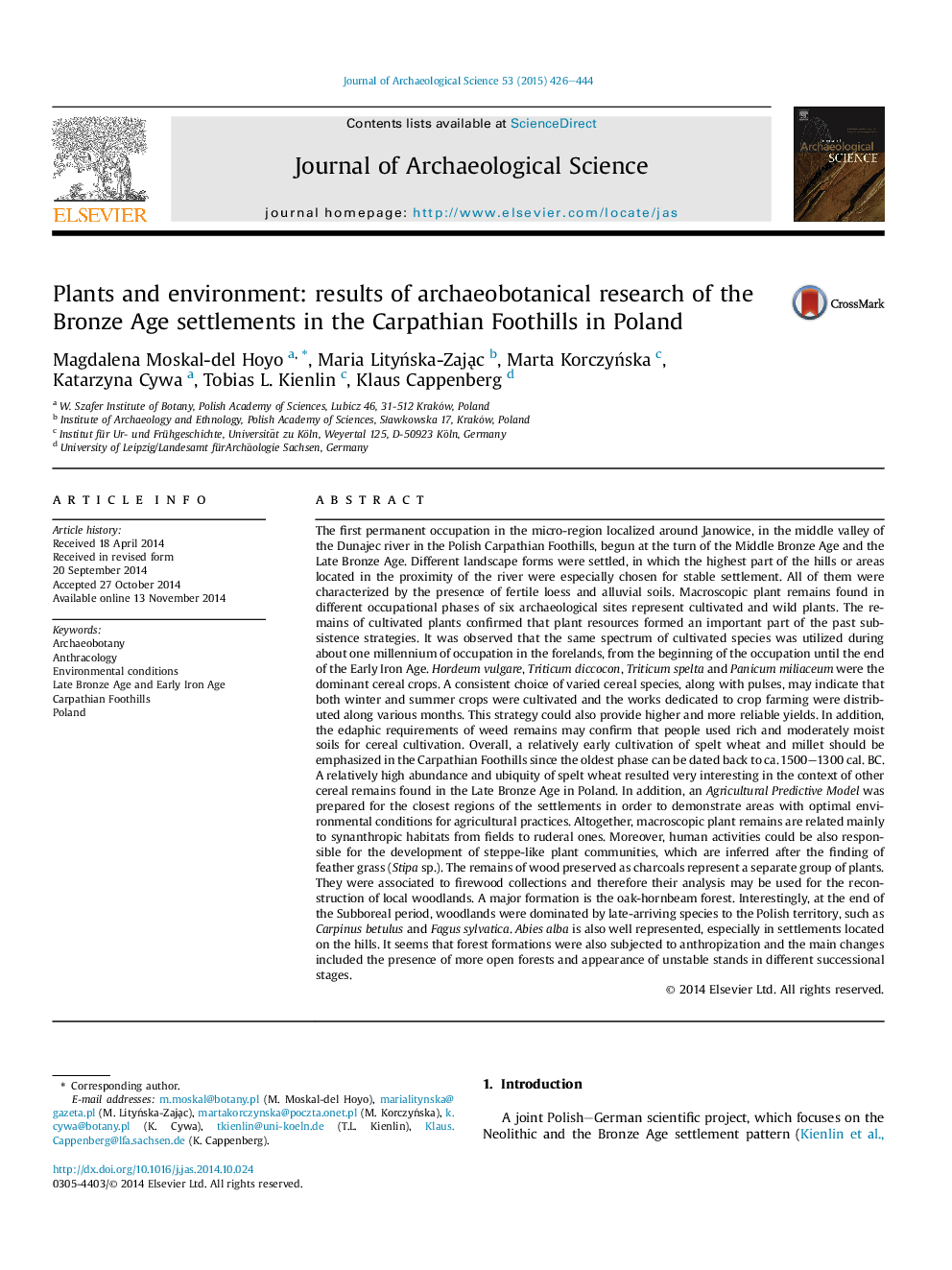| کد مقاله | کد نشریه | سال انتشار | مقاله انگلیسی | نسخه تمام متن |
|---|---|---|---|---|
| 7442630 | 1483907 | 2015 | 19 صفحه PDF | دانلود رایگان |
عنوان انگلیسی مقاله ISI
Plants and environment: results of archaeobotanical research of the Bronze Age settlements in the Carpathian Foothills in Poland
ترجمه فارسی عنوان
گیاهان و محیط زیست: نتایج تحقیقات باستانشناسی شهرکهای برنز در مناطق قبیله کارپات در لهستان
دانلود مقاله + سفارش ترجمه
دانلود مقاله ISI انگلیسی
رایگان برای ایرانیان
کلمات کلیدی
موضوعات مرتبط
مهندسی و علوم پایه
مهندسی مواد
دانش مواد (عمومی)
چکیده انگلیسی
The first permanent occupation in the micro-region localized around Janowice, in the middle valley of the Dunajec river in the Polish Carpathian Foothills, begun at the turn of the Middle Bronze Age and the Late Bronze Age. Different landscape forms were settled, in which the highest part of the hills or areas located in the proximity of the river were especially chosen for stable settlement. All of them were characterized by the presence of fertile loess and alluvial soils. Macroscopic plant remains found in different occupational phases of six archaeological sites represent cultivated and wild plants. The remains of cultivated plants confirmed that plant resources formed an important part of the past subsistence strategies. It was observed that the same spectrum of cultivated species was utilized during about one millennium of occupation in the forelands, from the beginning of the occupation until the end of the Early Iron Age. Hordeum vulgare, Triticum diccocon, Triticum spelta and Panicum miliaceum were the dominant cereal crops. A consistent choice of varied cereal species, along with pulses, may indicate that both winter and summer crops were cultivated and the works dedicated to crop farming were distributed along various months. This strategy could also provide higher and more reliable yields. In addition, the edaphic requirements of weed remains may confirm that people used rich and moderately moist soils for cereal cultivation. Overall, a relatively early cultivation of spelt wheat and millet should be emphasized in the Carpathian Foothills since the oldest phase can be dated back to ca. 1500-1300 cal. BC. A relatively high abundance and ubiquity of spelt wheat resulted very interesting in the context of other cereal remains found in the Late Bronze Age in Poland. In addition, an Agricultural Predictive Model was prepared for the closest regions of the settlements in order to demonstrate areas with optimal environmental conditions for agricultural practices. Altogether, macroscopic plant remains are related mainly to synanthropic habitats from fields to ruderal ones. Moreover, human activities could be also responsible for the development of steppe-like plant communities, which are inferred after the finding of feather grass (Stipa sp.). The remains of wood preserved as charcoals represent a separate group of plants. They were associated to firewood collections and therefore their analysis may be used for the reconstruction of local woodlands. A major formation is the oak-hornbeam forest. Interestingly, at the end of the Subboreal period, woodlands were dominated by late-arriving species to the Polish territory, such as Carpinus betulus and Fagus sylvatica. Abies alba is also well represented, especially in settlements located on the hills. It seems that forest formations were also subjected to anthropization and the main changes included the presence of more open forests and appearance of unstable stands in different successional stages.
ناشر
Database: Elsevier - ScienceDirect (ساینس دایرکت)
Journal: Journal of Archaeological Science - Volume 53, January 2015, Pages 426-444
Journal: Journal of Archaeological Science - Volume 53, January 2015, Pages 426-444
نویسندگان
Magdalena Moskal-del Hoyo, Maria LityÅska-ZajÄ
c, Marta KorczyÅska, Katarzyna Cywa, Tobias L. Kienlin, Klaus Cappenberg,
